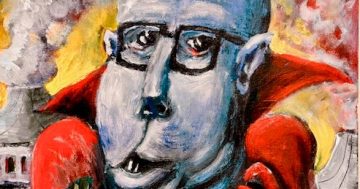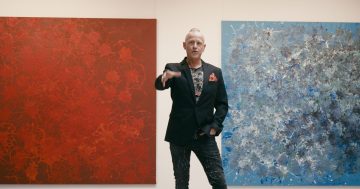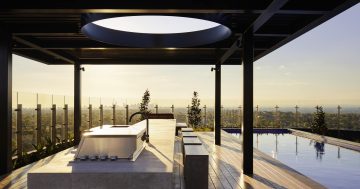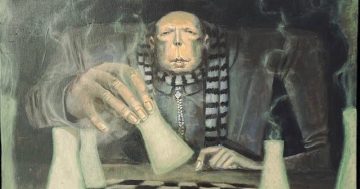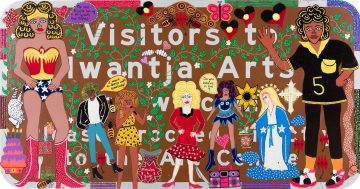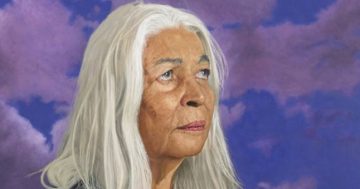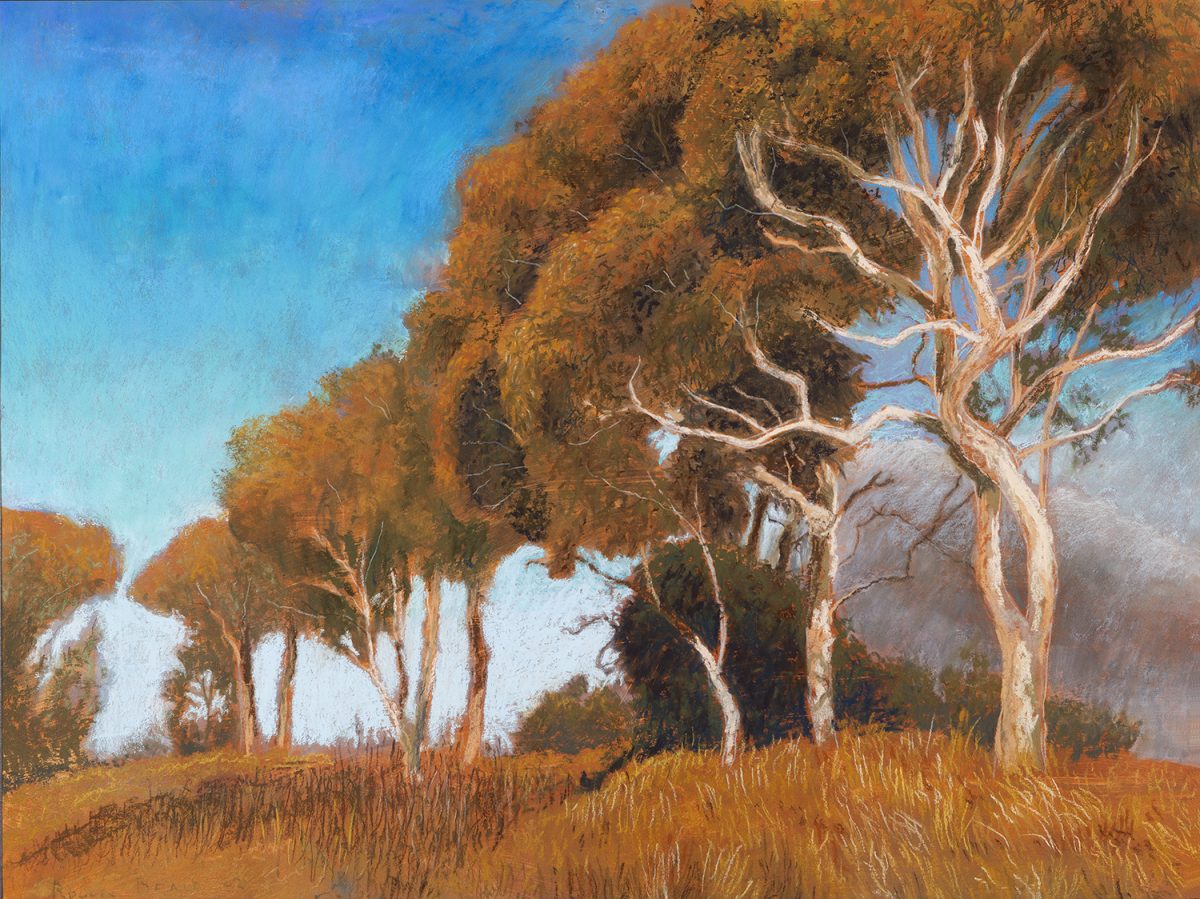
Roger Beale, Mt Mugga afternoon sun, 2022, pastel on paper, 56 x 75cm, Photo: Supplied.
At 77, Roger Beale is an artist who has seen it all. As a brilliant and successful senior career public servant, Beale has travelled around the world more times than most have had hot dinners. After 37 years of service, he retired in 2004 and has focussed on his art making.
However, Beale’s love of art predates his time in the public service. In his youth, he studied art with Betty and Roy Churcher and Jon Molvig in Brisbane and has been addicted to visiting art galleries and artists all his life. He started to exhibit his work in 1984, and it has been his primary focus since his retirement.
Beale has also faced physical impediments. Since childhood, he has lived with polio and has been confined to a wheelchair. In more recent years, damage to his right shoulder has meant that he had to switch to working with his non-preferred left hand. These factors may not define his art, but they contribute to his art practice.
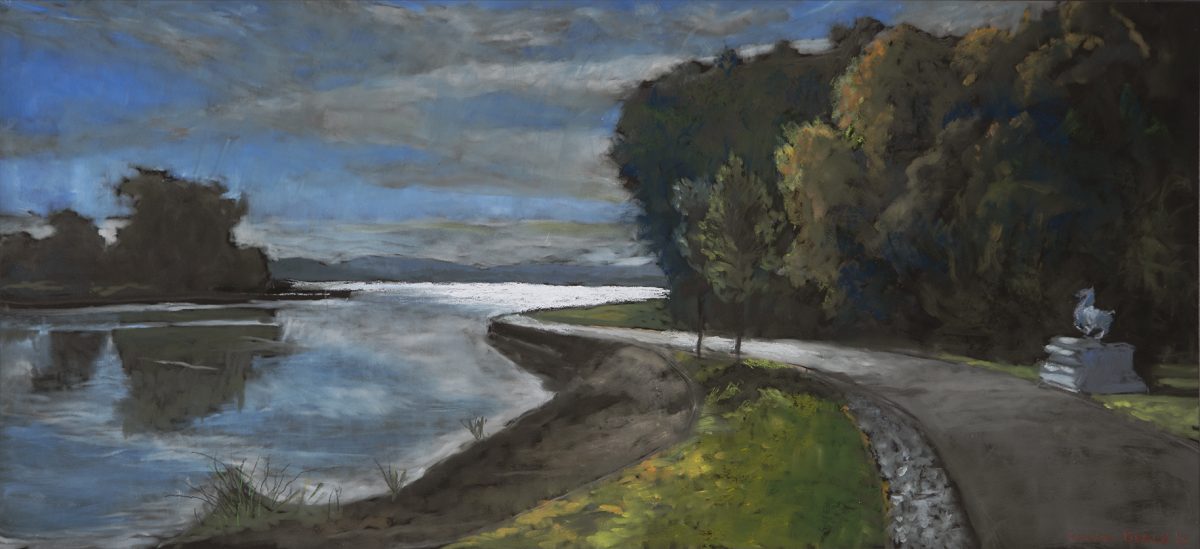
Roger Beale, Lake Burley Griffin: early morning, 2023, pastel on paper, 32 x 70.5cm, Photo: Supplied.
It has been five years since I last reviewed an exhibition by Beale, and over the intervening period, there has been change, yet a certain consistency.
As I recall, in earlier exhibitions, in terms of subject matter, there were postcard-like images from exotic locations around the world. Now the focus is largely on Australia and mainly the Canberra region. Also, the scale of his paintings has shrunk – they are more modest easel-size paintings that have been executed by an artist in a wheelchair.
More significantly, there is a slightly more sombre, more reflective mood in the exhibition, with the artist taking delight in observing a shaft of light, a solitary tree that has withstood the storm or the view into the garden surrounding his house.
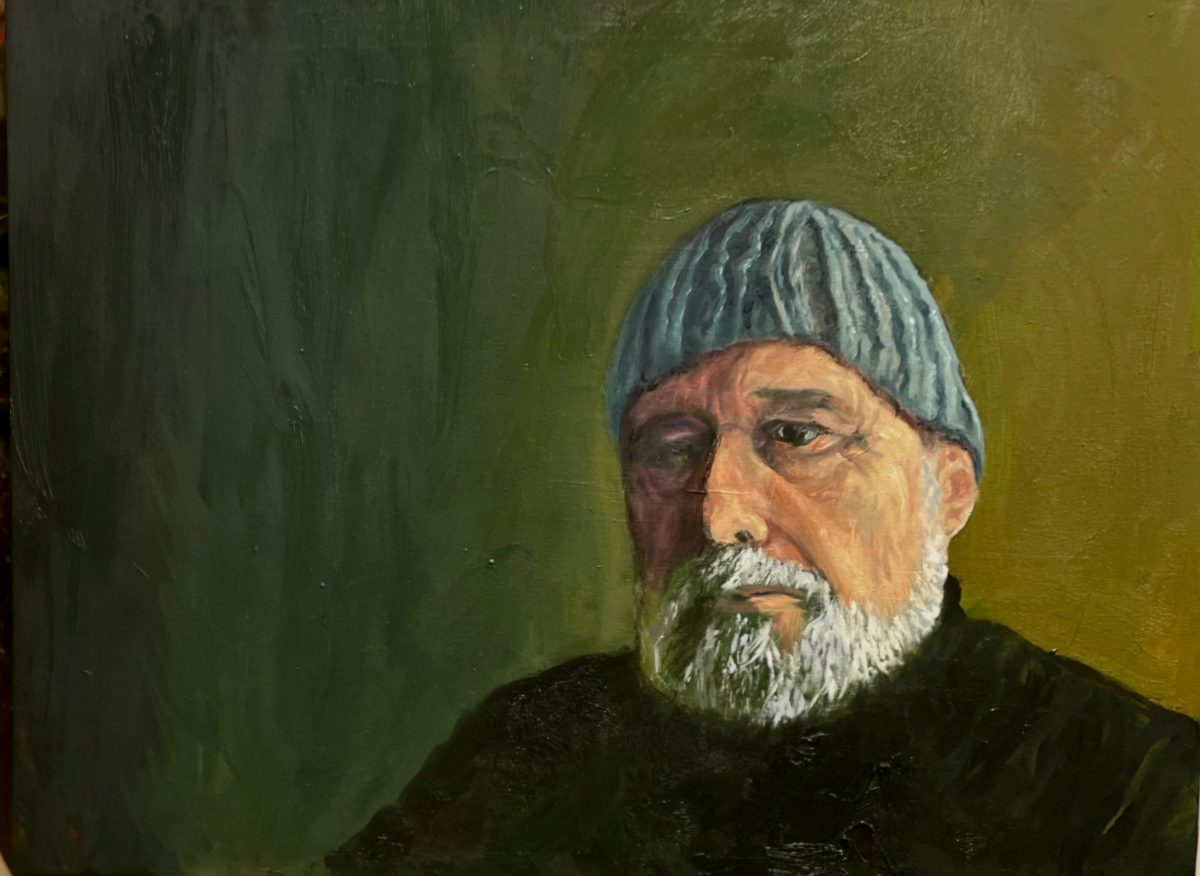
Roger Beale, What’s left behind, what lies ahead? 2024, oil on canvas on paper, 45.5 x 61.5cm. Photo: Supplied.
In a contemplative self-portrait, What’s left behind, what lies ahead?, 2024, the artist shows himself in a moment of reflection and even doubt, posing in a beany and looking away and past the beholder. Gone are the romantic heroics of some of his earlier self-portraits, as we encounter this image of sober realism.
The artist observes about this work, “This shows a moment of contemplation. These moments become more frequent as you approach 80. They are valuable. You should think about your past and acknowledge the future, including your inevitable death – ‘a time for every purpose under heaven: A time to be born and a time to die’ (Ecclesiastes 3). You should not be dismayed.”
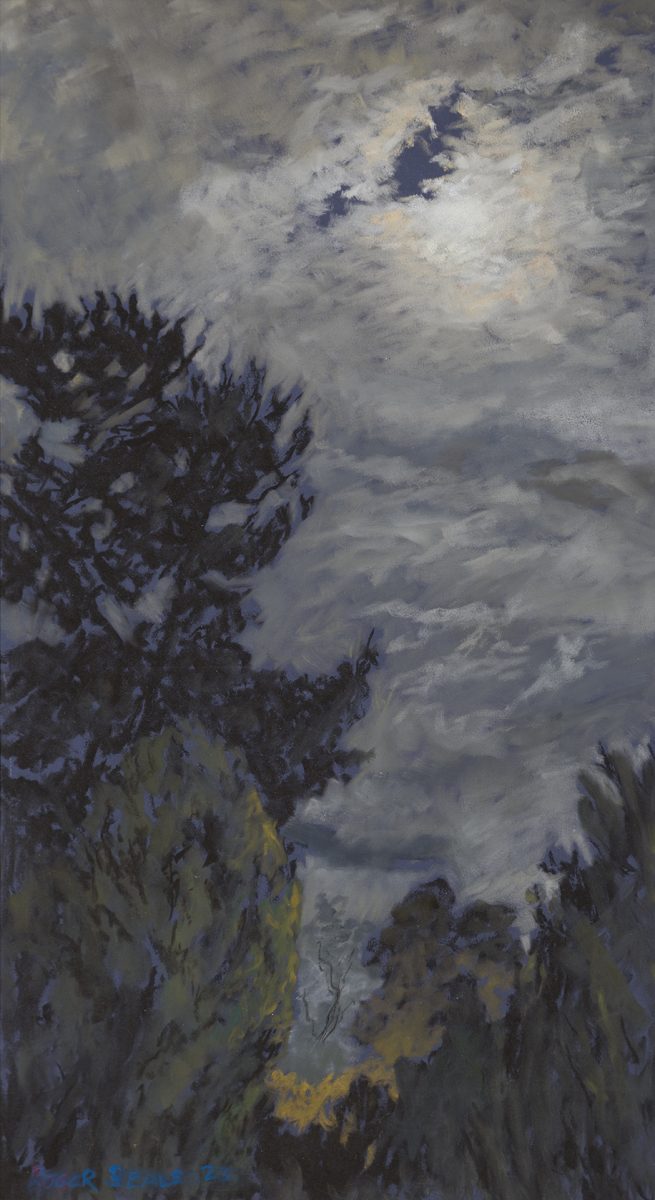
Roger Beale, Moonlight Deakin, 2022, pastel on paper, 51 x 28.5cm. Photo: Supplied.
As in his previous exhibitions, his more intimate pastel works form the backbone and the strongest part of this show. Moonlight Deakin, 2022 – a treescape executed within a restricted palette – shows a break in the clouds like a torn pathway for an escaping soul.
The pastel drawing, Glasshouse Mountains, 2017, is one of the strongest works in the exhibition, where childhood memories mix with careful observation. It is an unbridled romantic image where the main message is that nature is eternal and human life is temporary and hope of escape lies in the tiny break in the clouds. The mountains are bathed with a magical light while the storm clouds gather overhead.

Roger Beale, Glasshouse Mountains, 2017, pastel on paper, 71 x 51.5cm, Photo: Supplied.
Other pastel drawings, including After the flood, 2022, Mt Mugga afternoon sun, 2022, and Lake Burley Griffin: early morning, 2023, are some of the other strengths of the show, where Beale demonstrates a confidence in technique and heightened powers of observation. They are quite humble and honest drawings with just a touch of otherworldliness.
Beale’s art has always combined lyricism with a marked technical competence. There is a close observation of the moods of nature, the patterns of light and a celebration of the miracle of life that pervades against the forces of darkness. In these late works, a quiet spiritualism creeps into his art like a flickering candle that continues to shine despite the gusts of wind.
Posterity eventually sorts out the standing of artists, and I suspect that, in retrospect, Roger Beale will be remembered as an artist who possessed his own unique voice in his art, which differentiated him from many others of his generation.
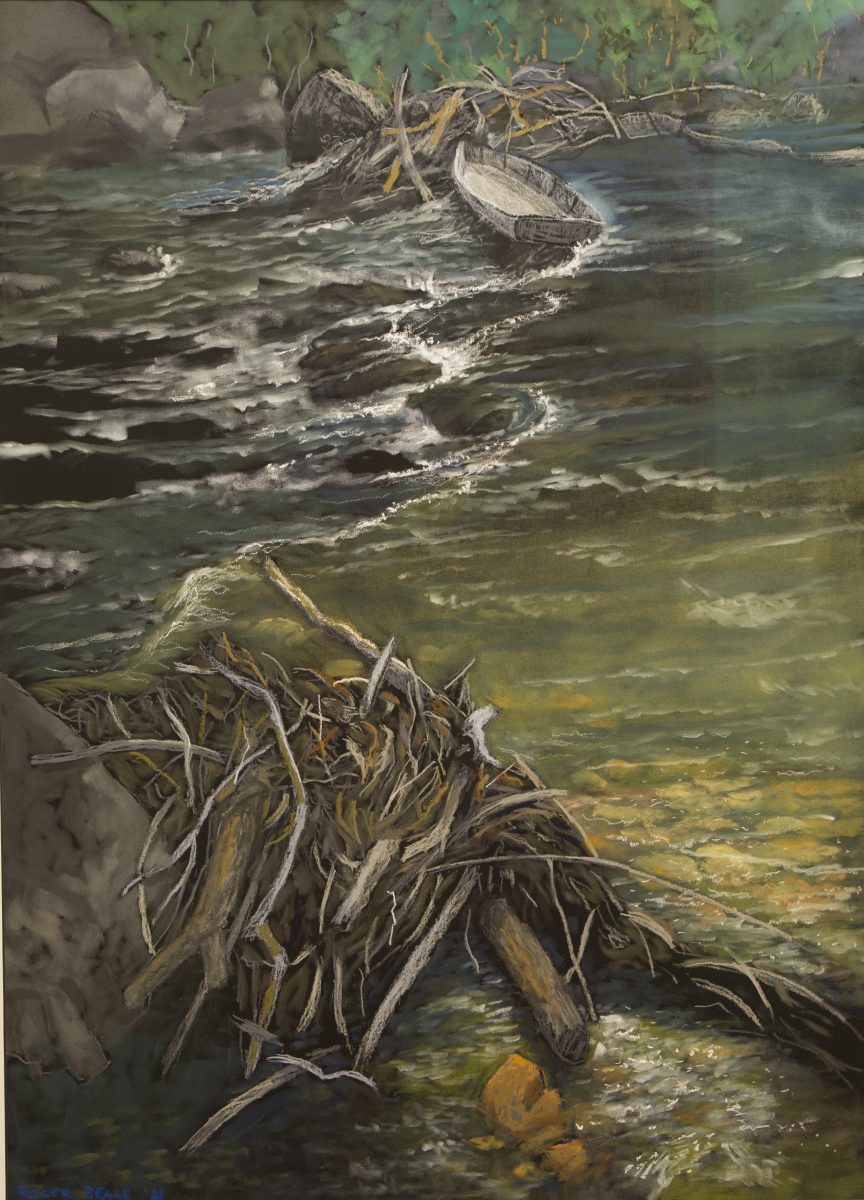
Roger Beale, After the flood, 2022, pastel on paper, 71 x 51cm. Photo: Supplied.
Roger Beale: Solo exhibition, is at Humble House Gallery, Fyshwick, from 21 September to 20 October. It’s open Wednesday to Sunday, 10 am to 4 pm.
Original Article published by Sasha Grishin on Riotact.


